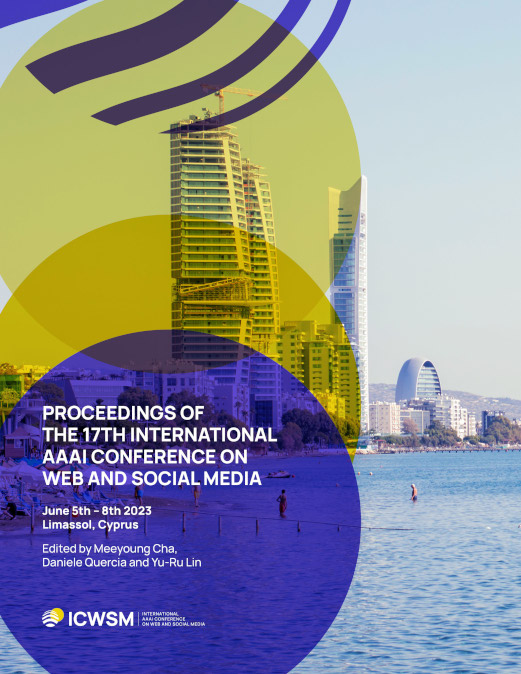Followback Clusters, Satellite Audiences, and Bridge Nodes: Coengagement Networks for the 2020 US Election
DOI:
https://doi.org/10.1609/icwsm.v17i1.22126Keywords:
Social network analysis; communities identification; expertise and authority discovery, Ranking/relevance of social media content and users, Qualitative and quantitative studies of social media, Human computer interaction; social media tools; navigation and visualizationAbstract
The 2020 United States (US) presidential election was — and has continued to be — the focus of pervasive and persistent mis- and disinformation spreading through our media ecosystems, including social media. This event has driven the collection and analysis of large, directed social network datasets, but such datasets can resist intuitive understanding. In such large datasets, the overwhelming number of nodes and edges present in typical representations create visual artifacts, such as densely overlapping edges and tightly-packed formations of low-degree nodes, which obscure many features of more practical interest. We apply a method, coengagement transformations, to convert such networks of social data into tractable images. Intuitively, this approach allows for parameterized network visualizations that make shared audiences of engaged viewers salient to viewers. Using the interpretative capabilities of this method, we perform an extensive case study of the 2020 United States presidential election on Twitter, contributing an empirical analysis of coengagement. By creating and contrasting different networks at different parameter sets, we define and characterize several structures in this discourse network, including bridging accounts, satellite audiences, and followback communities. We discuss the importance and implications of these empirical network features in this context. In addition, we release open-source code for creating coengagement networks from Twitter and other structured interaction data.Downloads
Published
2023-06-02
How to Cite
Beers, A., Schafer, J. S., Kennedy, I., Wack, M., Spiro, E. S., & Starbird, K. (2023). Followback Clusters, Satellite Audiences, and Bridge Nodes: Coengagement Networks for the 2020 US Election. Proceedings of the International AAAI Conference on Web and Social Media, 17(1), 59-71. https://doi.org/10.1609/icwsm.v17i1.22126
Issue
Section
Full Papers

